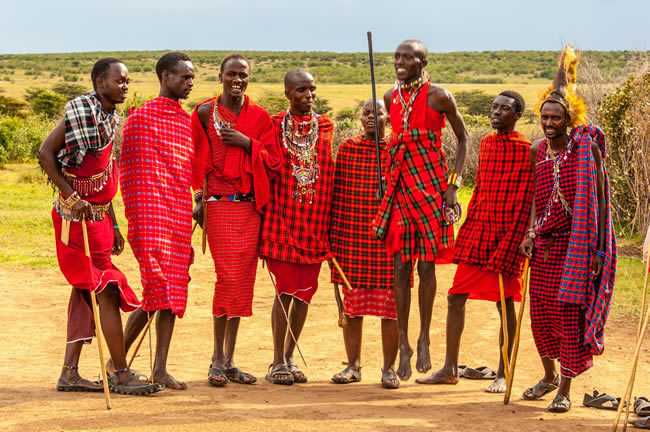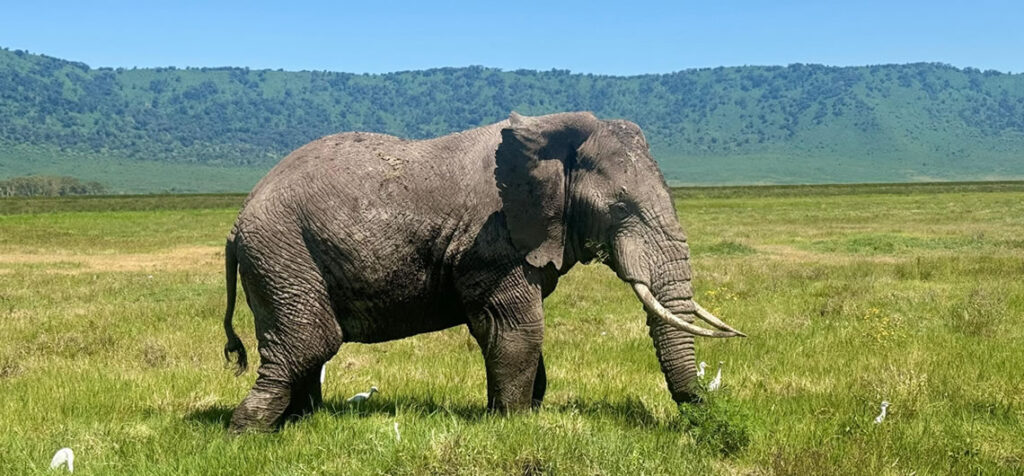The Ngorongoro Conservation Area is an original blend of excellent biodiversity and a rich heritage of culture. This amazing region, known as the “Eighth Wonder of the World,” is home to the stunning Ngorongoro Crater, a vast volcanic caldera rich with wildlife. As a protected area, Ngorongoro strikes a difficult balance between conservation and human life, providing a safe sanctuary for both rare animals and the indigenous Maasai. The area’s beautiful scenes and vibrant ecosystems attract scholars, visitors, and conservationists alike.
Ngorongoro’s popularity originates from its lively ecosystem, which supports a huge variety of flora and fauna. Clients can see a microcosm of East African wildlife within the crater’s walls, including the famed “Big Five” – lions, elephants, leopards, rhinoceroses, and Cape buffaloes – as well as lesser-known but equally intriguing animals like the serval and bushbuck. This biological diversity hotspot is not just a wildlife safety, but also an important site for botanical research, with several rare plant species contributing to its ecological variety.
Beyond its pristine environment, the Ngorongoro Conservation Area is notable archaeologically, with the Olduvai Gorge known as the “Cradle of Mankind.” This location has yielded vital insights into human evolution through the finding of ancient human remains and artifacts. Ngorongoro’s combination of scenic beauty and historical depth makes it an important place for scientific research and cultural discovery. It provides an original perspective on our planet’s history, present, and future.
The coexistence of wildlife and human groups in Ngorongoro exemplifies sustainable ecological preservation. The Maasai, who have lived in harmony with the land for years, maintain their traditional way of life while contributing to the area’s conservation efforts. This symbiotic relationship demonstrates how traditional knowledge and contemporary conservation strategies can collaborate to conserve and protect natural environments. The Maasai people’s ability to adapt and recover highlights the necessity of engaging local communities in caring for the environment.
Here are the Top Activities to do in the Ngorongoro Conservation Area.
Bird Watching at Lake Magadi.
Lake Magadi is located within the Ngorongoro Crater and is a birdwatcher’s enjoyment. This small, alkaline lake attracts a variety of bird species, making it one of the top bird-watching destinations in the area.
Flamingos are the lake’s most well-known occupants, typically seen wading in big flocks and presenting a spectacular display with their pink plumage. In addition to flamingos, bird viewers can witness pelicans, storks, and a variety of waterfowl. Lake Magadi is an ideal destination for ornithologists and environment enthusiasts alike, thanks to its vast bird population and attractive location.
Cultural Visits to Maasai Villages.

Interacting with the Maasai people is a culturally interesting activity that gives you a better grasp of the region’s human history. The Maasai have resided in the Ngorongoro Conservation Area for decades, upholding their traditional lifestyle and customs. Visitors can take tours of Maasai villages and learn about their distinctive way of life, which includes traditional dress, dances, and crafts.
Engaging with the Maasai provides an opportunity to learn personally about their involvement in conservation and their efforts to share their homes with the wildlife in the area. These cultural trips frequently create an indelible effect and highlight the significance of conserving cultural traditions.
Hiking on the Empakaai Crater.
The Empakaai Crater provides a one-of-a-kind experience for individuals who enjoy hiking and amazing views. Empakaai, unlike the more well-known Ngorongoro Crater, is smaller and more remote, offering a more immediate encounter with nature. The journey down to the Crater Lake is both tough and enjoyable, passing through lush forests filled with birds and other creatures. The peaceful lake on the crater’s floor is frequently surrounded by flamingos, bringing a flash of color to the peaceful setting. The climb provides wonderful landscapes as well as an up-close experience of the area’s wild beauty.
Exploring Olduvai Gorge.
Olduvai Gorge, also known as the “Cradle of Mankind,” is a must-see for historians and others interested in human evolution. This location, inside the Ngorongoro Conservation Area, has produced some of the most known paleoanthropological findings, such as ancient hominid remains and stone tools. Visitors can take a visit of the Olduvai Museum, which displays artifacts and extensive exhibits about the region’s prehistoric history. Visitors can take guided tours of the gorge to witness excavation sites and learn about the continuing research that is revealing fresh information about our distant ancestors.
Wildlife Safaris in the Ngorongoro Crater

A wildlife safari in the Ngorongoro Crater is an unforgettable trip, with guests getting to see one of Africa’s densest wildlife populations. The crater’s unique terrain produces an ecological home for a varied range of wildlife. Safari lovers can see the “Big Five” – lions, elephants, leopards, rhinoceroses, and Cape buffaloes – as well as other fascinating animals like zebras, wildebeests, and hippos.
The crater floor contains a mosaic of lakes, woods, and grasslands, creating a variety of habitats for many creatures. Professional guides improve the experience by providing knowledge of wildlife behavior and ecology.
Camping in the Ngorongoro Highlands
Camping in the Ngorongoro Highlands provides a deep connection for anyone seeking to connect closely with nature. The highlands offer a peaceful and distant location ideal for the observation of stars, listening to the sounds of nature, and inhaling in the fresh, clean air. There are several authorized campsites, each of which provides basic amenities while minimizing environmental damage. Camping in this area allows guests to witness exquisite sunrises and sunsets over the great landscapes, resulting in unique memories. It’s also a fantastic base for early morning safaris, giving you a head start on the day’s activities.
Finally, the Ngorongoro Conservation Area is a real find of natural and cultural surprises, with a wide choice of activities for nature adventurers, animal supporters, and cultural explorers. Every experience in Ngorongoro is highly engaging and unique, from the amazing animal safaris in the Ngorongoro Crater and the archeological significance of Olduvai Gorge to the relaxing hikes in the Empakaai Crater and capturing cultural visits to Maasai settlements. Bird watching at Lake Magadi, highland camping, and seeing the Shifting Sands are among the highlights of the area’s distinctive attractions.
